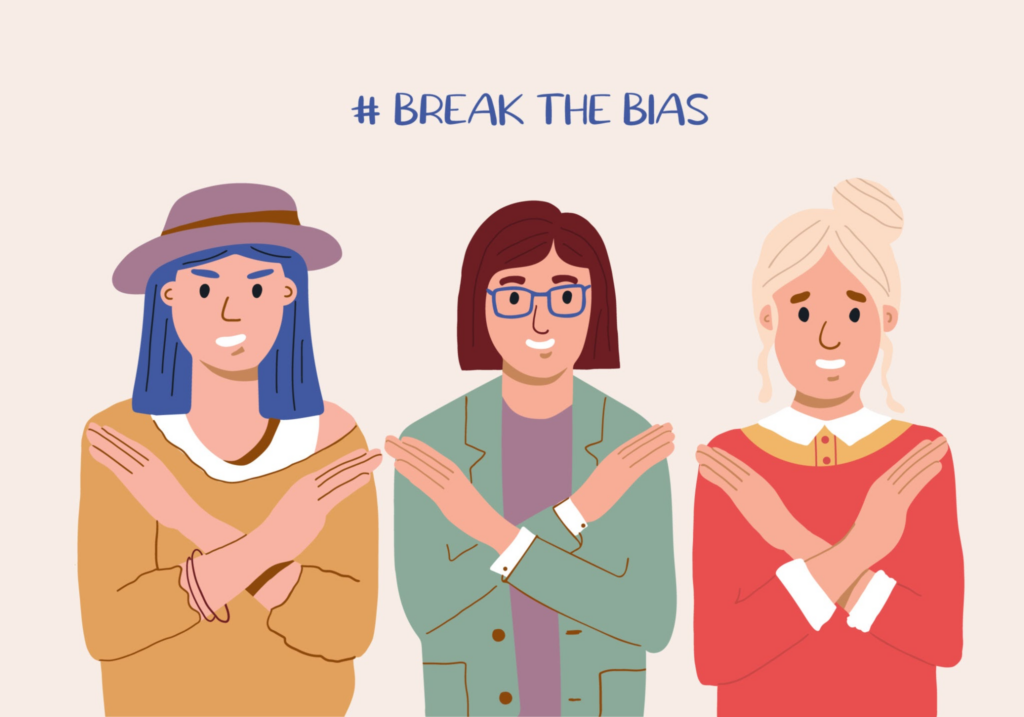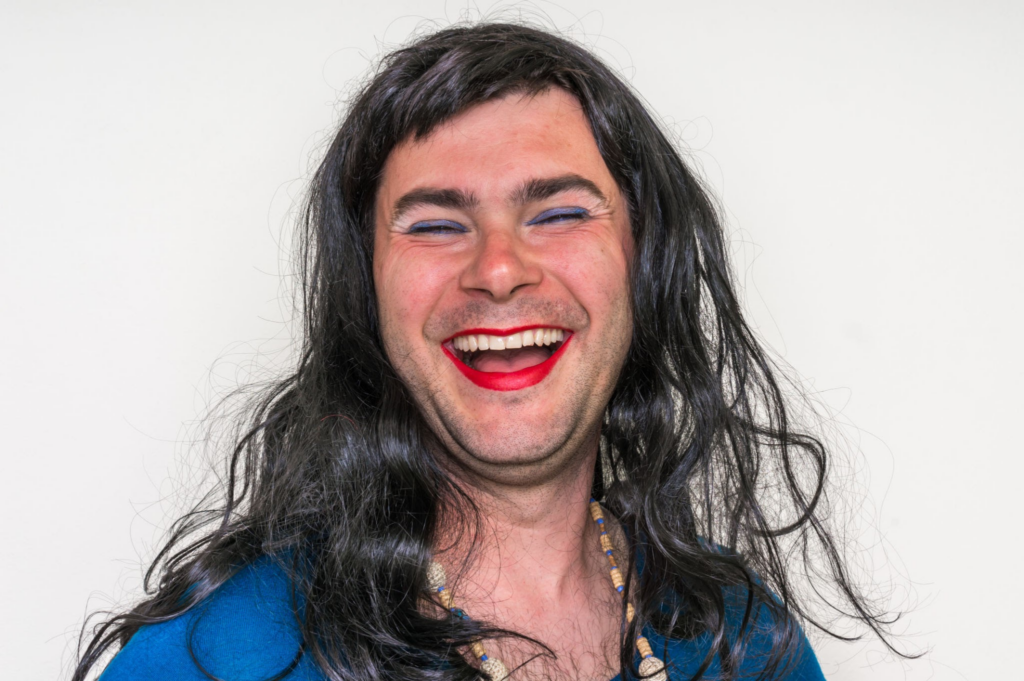Have you ever stopped to think about what it truly means to be a woman? Is it the long, flowing hair? The love for all things pink and sparkly? Or maybe the maternal instinct that kicks in the moment you hold a baby? The truth is, there’s no one-size-fits-all answer. Womanhood, like gender itself, is a complex social construct shaped by history, culture, and ever-evolving societal pressures.
This blog post will take you on a journey to unpack the layers of womanhood. We’ll explore how historical expectations have dictated gender roles, delve into the pressures and stereotypes women face today, and examine how womanhood intersects with other aspects of identity.
I. The Societal Construction of Womanhood
Think of gender as a giant theatrical production. We’re all given costumes (masculine or feminine) and scripts (how men and women should behave) to follow. But here’s the twist: these costumes and scripts aren’t divinely ordained, they’re created by society.

A. Historical Perspectives on Gender Roles
Let’s rewind the clock and peek into the past. For centuries, societies around the world have subscribed to a fairly rigid binary when it comes to gender. Women were primarily relegated to the domestic sphere, expected to be nurturing caretakers who focused on raising children and managing the household. Men, on the other hand, were seen as the breadwinners, the strong, silent types who ventured out into the world to conquer careers and bring home the bacon (or whatever the local currency was).
Traditional Expectations: Domesticity and Nurturing
This model of gender roles has deep roots. From ancient Greece, where women were confined to the home, to Victorian England, where the concept of the “perfect lady” reigned supreme, the expectation for women has often been rooted in domesticity and nurturing. Think of historical figures like Florence Nightingale, the epitome of the selfless caregiver, or Marie Curie, whose scientific brilliance was overshadowed by her husband’s initial recognition.
Waves of Feminism and Shifting Definitions
But history isn’t static, and thankfully, neither are societal norms. The rise of feminism over the past few centuries has fundamentally challenged these traditional expectations. From the fight for suffrage to the dismantling of workplace discrimination, feminist movements have pushed for a more equitable definition of womanhood. Women are no longer confined to the kitchen. They’re CEOs, astronauts, athletes – shattering glass ceilings and redefining what it means to be a woman.

B. Societal Pressures and Stereotypes
Despite these advancements, societal pressures and stereotypes about womanhood are still very much alive and kicking. Let’s take a closer look at two major areas:
- Beauty Standards and Body Image Our world is bombarded with images of what a “perfect” woman should look like. Airbrushed models with impossible figures grace magazine covers and social media feeds, creating an unrealistic and often unhealthy standard for women to strive for. This constant pressure can lead to body image issues, low self-esteem, and even eating disorders.
- Gendered Expectations in Work and Careers The idea that certain careers are inherently masculine or feminine persists. Science, technology, engineering, and math (STEM) fields are often seen as a “boy’s club,” while careers in caregiving, education, and the service industry are viewed as more suited for women. This not only limits opportunities for women but also reinforces outdated gender stereotypes.

C. The Intersection of Womanhood with Other Identities
Being a woman is just one piece of the puzzle that makes up a person’s identity. Other factors like race, ethnicity, class, sexual orientation, and gender identity all play a role in shaping a woman’s experience.
- Race, Ethnicity, and Class The experience of womanhood is not universal. A Black woman in America will face different societal pressures and expectations than a Latina woman in Europe, for example. Similarly, a woman from a working-class background may have vastly different opportunities than a woman born into wealth and privilege.
- Sexual Orientation and Gender Identity The binary view of womanhood is further challenged by the LGBTQ+ community. Lesbian, bisexual, and queer women may not identify with traditional notions of femininity. Transgender women, who identify as women but were assigned male at birth, add another layer of complexity to the conversation about womanhood.
II. The Lived Experience of Being a Woman
We’ve unpacked the societal construction of womanhood, but what’s it actually like to live and breathe as a woman in the real world? This section delves into the subjective experiences that shape a woman’s journey.
A. Internal Definitions and Self-Identity
At the heart of womanhood lies a woman’s sense of self. This internal definition is a complex tapestry woven from personal experiences, societal influences, and a healthy dose of self-discovery.
- Embracing Femininity on One’s Own Terms For some women, femininity comes naturally. They relish rocking a flowy dress, adorning themselves with jewelry, and expressing themselves in ways traditionally associated with the feminine. There’s nothing wrong with that! But femininity shouldn’t be a one-size-fits-all mold. A woman who feels most comfortable in ripped jeans and a t-shirt is no less feminine. Femininity is about embracing what makes you feel confident and beautiful in your own skin.
- Challenging Gender Norms and Redefining Femininity Many women choose to rewrite the rules of femininity altogether. Think of legendary artist Frida Kahlo, who sported a mustache and vibrantly colored clothing, defying traditional notions of beauty. Women in STEM fields who shatter glass ceilings or female athletes who break records all redefine what it means to be a woman on their own terms. These women show us that femininity can be powerful, assertive, and even a little bit messy – and that’s perfectly okay.
B. Emotional Landscape and Expression
Women are often stereotyped as being overly emotional or ruled by their hormones. But emotions are a fundamental human experience, not exclusive to women. The reality is, women experience a full spectrum of emotions, just like everyone else.
- Strength, Vulnerability, and the Full Spectrum of Emotions Women can be fiercely strong and independent. They can be leaders, innovators, and the rock of their families. They can also be vulnerable, cry tears of joy or sorrow, and express their feelings openly. Strength and vulnerability are not opposites; they can coexist beautifully within a woman.
- The Impact of Societal Conditioning on Emotions That being said, societal conditioning can play a role in how women express their emotions. For example, a young girl might be told to “calm down” or “stop crying” when she’s expressing anger or sadness. This can lead to women suppressing their emotions, which can have negative consequences on their mental health. It’s important to create space for women to express their full range of emotions in a healthy way.
C. Life Stages and Transitions
A woman’s life is a journey marked by distinct stages, each with its own set of experiences and challenges.
- Puberty, Menstruation, and Bodily Autonomy Puberty is a pivotal time for a young woman, marked by physical changes and the onset of menstruation. This can be a confusing and overwhelming time, but it’s important to have open and honest conversations about these bodily functions. Education and open communication are key to empowering young women to understand and appreciate their bodies. Furthermore, bodily autonomy is crucial. A woman has the right to make decisions about her own body, from menstruation to childbirth to healthcare.
- Motherhood (by Choice or Circumstance) Motherhood is a deeply personal experience that can be incredibly rewarding. The bond between a mother and child is unlike any other. However, motherhood is not for everyone, and women shouldn’t feel pressured to conform to societal expectations of having children. Ultimately, the decision of whether or not to become a mother is a deeply personal one.
- Career Aspirations and Work-Life Balance Women are shattering glass ceilings in the workplace every single day. They’re doctors, lawyers, CEOs, and astronauts, defying stereotypes and pursuing their dreams. However, achieving work-life balance can be a constant struggle for women. Many women shoulder the majority of childcare and domestic responsibilities, making it difficult to carve out time for their careers. Supportive partners, flexible workplaces, and affordable childcare are all essential for women to be able to thrive in both their professional and personal lives.

III. Looking Like a Woman: Beyond Stereotypes
We’ve delved into the societal construction of womanhood and explored the rich tapestry of a woman’s lived experience. But what about the external? How do women look feminine? Well, the answer, like everything else we’ve discussed, is far more nuanced than a simple pink dress and a pair of high heels.

A. Defining Feminine Appearance for Yourself
Forget the outdated notion that there’s a single, universally flattering “feminine look.” Femininity is a feeling, an energy you project, a confidence in who you are. It’s about embracing what makes you feel beautiful and put-together, regardless of what fashion magazines or societal norms dictate.
- Exploring Fashion and Style Without Limitations Fashion is a playground, a chance to experiment and express your unique personality. Let’s face it, a power suit can be just as feminine as a flowing maxi dress. Think of fashion icons like Rihanna, who rocks everything from oversized streetwear to ultra-glam gowns, all with undeniable confidence. It’s not about the clothes themselves, but how you wear them and how they make you feel.
- Celebrating Body Diversity and Positive Body Image The beauty standards bombarding us from billboards and social media often promote a very narrow definition of feminine beauty. But women come in all shapes and sizes, and that’s something to celebrate! Femininity isn’t about fitting into a mold; it’s about embracing your own unique body. Whether you’re petite or plus-size, curvy or straight, there’s a way to dress that flatters your figure and makes you feel confident.

B. The Role of Hair, Makeup, and Presentation
Hair, makeup, and overall presentation can all play a role in how a woman expresses herself. But here’s the key: these are tools, not requirements.
- Traditional Signifiers and Modern Interpretations Traditionally, long, flowing hair has been associated with femininity. But a woman with a pixie cut can be just as feminine. Makeup can be a fun way to enhance your features and play with different looks. However, a bare face doesn’t diminish your femininity one bit. The key is to use these tools, if you choose to use them at all, in a way that feels authentic to you.
- Expressing Femininity Through Individual Choices Think of celebrities like actress Emma Watson, who often rocks a bold red lip, or singer Alicia Keys, who proudly embraces her natural beauty without makeup. These women showcase the beauty of individuality. You can channel your inner rockstar with bold eyeliner or keep it simple with a touch of mascara. It’s all about what makes you feel the most confident and beautiful version of yourself.
C. Deconstructing the “Look” of Womanhood
The media is a powerful force that shapes our perception of beauty and femininity. Airbrushed models and unrealistic portrayals can make us feel insecure about our own appearances. It’s important to remember that these images are often heavily manipulated and don’t represent real women.
- The Influence of Media and Cultural Ideals Different cultures have different ideals of beauty. What’s considered feminine in one part of the world might not be seen the same way in another. The key takeaway? Femininity is not a universal look dictated by media or culture. It’s a confidence that shines through, regardless of your background or appearance.
- Embracing Femininity Regardless of Appearance Let’s be honest, some days sweatpants and a messy bun are just what the doctor ordered. And that’s perfectly okay! Femininity isn’t about looking perfect all the time. It’s about embracing who you are, inside and out. It’s about feeling comfortable and confident in your own skin, whether you’re dressed to the nines or rocking comfy clothes.
IV. Beyond the Binary: Expanding Our Understanding
We’ve unpacked the societal construction of womanhood, explored the lived experience of women, and challenged the limitations of appearance. But the conversation around womanhood needs to be even more inclusive. Let’s break free from the binary and celebrate the rich tapestry of identities that fall under the umbrella of womanhood.
A. The Spectrum of Gender Identity and Expression
Gender identity is a complex concept that refers to a person’s internal sense of being male, female, or something else entirely. It’s separate from a person’s sex assigned at birth, which is typically based on physical anatomy.
- Understanding Transgender and Non-Binary Identities Transgender women are individuals who were assigned male at birth but identify as women. Non-binary people identify with a gender that is neither exclusively masculine nor feminine, or they may feel they exist outside the gender binary altogether.These identities are valid, and transgender and non-binary women are an important part of the conversation about womanhood. Actress Laverne Cox, for example, is a proud transgender woman who uses her platform to advocate for LGBTQ+ rights.
- Moving Beyond Female Anatomy to Define Womanhood Traditionally, womanhood has been defined by biological sex. But this definition is too narrow. A woman’s identity isn’t solely based on her anatomy. Transgender women who have not undergone physical changes can still be women. Womanhood is about self-identification and internal sense of self.
B. Redefining Success and Power for Women
For too long, societal definitions of success for women have been limited. The image of the “power woman” often conjures up a corporate executive in a pantsuit, climbing the corporate ladder. But what about the stay-at-home mom who nurtures her children? The artist who pours her heart and soul into her work? The entrepreneur who builds a thriving business from the ground up?
- Reframing Traditional Concepts of Power It’s time to redefine success and power for women on their own terms. Success can be about achieving financial independence, raising a happy and healthy family, pursuing creative passions, or making a positive impact on the world. Power can be found in leadership positions, in quiet acts of strength, in resilience and perseverance.
- Celebrating Diverse Paths to Achievement Let’s celebrate the diverse paths women take to achieve their goals. From Nobel Prize winners to community organizers, from CEOs to teachers, women are making a difference in every corner of the world. There’s no single path to success, and every woman’s journey is unique and valuable.
V. Conclusion: A Celebration of Womanhood’s Complexity
Womanhood is a beautiful and complex concept that defies easy definition. It’s about self-discovery, embracing your authentic self, and shattering stereotypes. It’s about strength, vulnerability, compassion, and humor. It’s about the choices you make, the dreams you chase, and the impact you leave on the world.
Being a woman is not about fitting into a mold. It’s about celebrating the rich tapestry of experiences, identities, and expressions that make women who they are. So, the next time you hear someone ask “What does it mean to be a woman?” remember, there’s no single answer. The beauty of womanhood lies in its very complexity.
Feminizator.com is a website that believes that femininity is a colorful universe. Here, you won’t find rigid definitions or worn-out stereotypes about femininity. Instead, we celebrate a vibrant spectrum with all the complexity, power and joy of being “it”. Every day, we dive into the multifaceted world of femininity. We explore topics such as inner strength, creative expression, conscious living and global perspectives. We also embrace LGBT+ and transgender people and show them different ways of being feminine. We are here to empower you to embrace your femininity, own your own story and blossom into the best version of yourself. Welcome to Feminizator. Welcome to yourself.
FAQs
What does it mean to be a strong woman?
There’s no one-size-fits-all definition of a strong woman. Strength can come in many forms: resilience in the face of adversity, the courage to be yourself, the unwavering love for your family, the determination to pursue your dreams. A strong woman is someone who knows her worth and stands up for what she believes in.
How can I challenge stereotypical expectations of women?
You can challenge stereotypes by simply living your life authentically. Don’t feel pressured to conform to what society expects of women. Pursue your passions, whether they fit neatly into traditional gender roles or not. Speak up against sexism and discrimination. Be a role model for other women who are breaking barriers.
What resources are available for women facing gender-based discrimination?
Many resources are available for women facing gender-based discrimination. Depending on your location, you can reach out to organizations that advocate for women’s rights, legal aid services, or hotlines that provide support and guidance.
What are some common challenges of being a woman in today’s society?
Navigating gender biases, glass ceilings in workplaces, and societal pressure for balancing career and family responsibilities are common challenges women face.
How does being a woman impact career opportunities?
Women often encounter barriers such as gender discrimination, wage gaps, and limited access to leadership positions, affecting their career progression and opportunities for advancement.
What are the benefits of being a woman in the workplace?
Women bring diverse perspectives, empathy, and collaboration skills to workplaces, fostering innovation and inclusive environments that benefit overall team performance.
How does being a woman influence relationships?
Gender norms and societal expectations can shape women’s roles and dynamics in relationships, impacting aspects like communication styles, decision-making, and division of labor.
What are some societal expectations placed on being a woman?
Societal expectations often dictate roles related to caregiving, appearance, and behavior, placing pressure on women to conform to traditional gender norms and standards.
How does being a woman affect mental health?
Women may experience unique stressors related to societal pressures, gender-based violence, and hormonal fluctuations, influencing their mental health and well-being.
What are some legal rights specific to being a woman?
Legal rights include protections against discrimination, access to reproductive health services, and measures to address gender-based violence and harassment.
How does being a woman impact reproductive health?
Women face challenges related to reproductive rights, access to healthcare, and societal attitudes towards contraception, pregnancy, and reproductive choices.
What are some stereotypes associated with being a woman?
Stereotypes include assumptions about women’s roles, capabilities, and emotions, reinforcing gender biases and limiting opportunities for self-expression and empowerment.
How does being a woman affect access to healthcare?
Women may encounter barriers such as limited access to reproductive health services, gender bias in medical treatment, and affordability issues, impacting their overall healthcare outcomes.
How does being a woman intersect with race and ethnicity?
Intersectionality highlights how race, ethnicity, and gender intersect to shape women’s experiences, often exacerbating inequalities and discrimination based on multiple identities.
How does being a woman affect experiences of discrimination?
Women face discrimination in various forms, including pay inequity, gender-based violence, and systemic biases in education, employment, and healthcare settings.
What are some cultural differences in perceptions of being a woman?
Cultural norms and values influence perceptions of femininity, women’s roles, and expectations across different societies, leading to diverse experiences and challenges for women worldwide.
How does being a woman impact access to education?
Historically, women have faced barriers to education, including limited opportunities, cultural norms favoring male education, and systemic biases, although progress has been made towards gender equality in education.
How does being a woman influence body image and self-esteem?
Societal beauty standards and media portrayals often contribute to body image issues and low self-esteem among women, impacting their mental and emotional well-being.
How does being a woman affect experiences of harassment?
Women commonly experience harassment, including sexual harassment, street harassment, and online harassment, which can have significant negative effects on their sense of safety and well-being.
How does being a woman influence parenting roles?
Gender norms and expectations shape parenting roles, with women often bearing the primary responsibility for caregiving and household duties, though evolving societal attitudes are challenging traditional gender roles.
What are some common misconceptions about being a woman?
Misconceptions include the belief that all women are nurturing and emotional, that they prioritize family over career, and that they are less competent in certain fields like STEM.
How does being a woman intersect with sexuality?
Gender identity and sexual orientation intersect, influencing experiences of attraction, relationships, and societal acceptance, with LGBTQ+ women facing unique challenges related to discrimination and stigma.
How does being a woman affect experiences of violence?
Women disproportionately experience various forms of violence, including domestic violence, sexual assault, and human trafficking, stemming from power imbalances and entrenched gender inequalities.
How does being a woman influence leadership opportunities?
Women often face barriers such as gender bias, stereotyping, and lack of mentorship, limiting their access to leadership roles and opportunities for advancement in various sectors.
How does being a woman impact access to resources?
Gender disparities in access to resources such as education, employment, land ownership, and financial services persist, perpetuating inequalities and hindering women’s socio-economic empowerment.
How does being a woman affect experiences of aging?
Women may face ageism, financial insecurity, and health challenges in older age, compounded by factors such as caregiving responsibilities and unequal access to pension and healthcare services.
What are some cultural rituals or traditions related to being a woman?
Cultural rituals may include coming-of-age ceremonies, marriage customs, and practices surrounding childbirth and motherhood, varying widely across different societies and traditions.
How does being a woman influence perceptions of beauty?
Societal beauty standards often prioritize youth, thinness, and Eurocentric features, influencing women’s perceptions of self-worth and body image, leading to pressures to conform to unrealistic ideals.
How does being a woman affect access to sports and athletics?
Women face barriers such as limited funding, media coverage, and opportunities for participation and leadership in sports, perpetuating gender inequalities in athletics.
How does being a woman intersect with socioeconomic status?
Women, particularly those from marginalized communities, are disproportionately affected by poverty, lack of access to education and employment opportunities, and systemic barriers to economic empowerment.
How does being a woman influence experiences of motherhood?
Motherhood experiences vary widely based on cultural norms, socio-economic status, and personal choices, with women facing challenges such as work-life balance, societal expectations, and access to support services.
What are some health issues specific to being a woman?
Health issues include reproductive health concerns, such as menstruation, pregnancy, and menopause, as well as conditions like breast cancer, osteoporosis, and autoimmune diseases that affect women disproportionately.
How does being a woman impact access to contraception?
Access to contraception varies globally, with factors such as affordability, education, and cultural attitudes influencing women’s ability to control their reproductive choices and access family planning services.
How does being a woman influence experiences of homelessness?
Women experiencing homelessness often face gender-specific risks such as sexual violence, lack of access to hygiene facilities, and challenges in accessing shelter and support services tailored to their needs.
How does being a woman affect access to technology?
Women may face barriers such as digital literacy gaps, gender biases in the tech industry, and limited access to resources and opportunities in STEM fields, hindering their full participation in the digital world.
How does being a woman intersect with disability?
Women with disabilities face intersecting forms of discrimination based on both gender and disability, affecting their access to healthcare, education, employment, and social inclusion.
How does being a woman influence experiences of poverty?
Women are disproportionately affected by poverty due to factors such as wage gaps, limited access to economic opportunities, and caregiving responsibilities, leading to higher rates of female-headed households living in poverty.
How does being a woman affect access to clean water and sanitation?
Women often bear the primary responsibility for water collection and sanitation in many cultures, facing challenges such as lack of access to clean water sources, sanitation facilities, and hygiene education.
What are some common experiences of being a woman in different cultures?
Common experiences include gender-based discrimination, unequal access to opportunities, and societal expectations related to roles such as caregiving, marriage, and community leadership, though specific manifestations may vary across cultures.
How does being a woman influence access to reproductive rights?
Access to reproductive rights, including contraception, abortion, and maternal healthcare, varies globally and is influenced by factors such as legal restrictions, cultural norms, and socio-economic status, impacting women’s autonomy and health outcomes.
How does being a woman affect access to financial services?
Women often face barriers such as lack of access to banking services, credit, and financial literacy, limiting their ability to save, invest, and participate in economic activities, particularly in developing countries.
How does being a woman intersect with mental health stigma?
Women may face gender-specific stigma and societal pressures related to mental health issues such as depression and anxiety, often discouraging them from seeking help or support, leading to underdiagnosis and undertreatment.
How does being a woman influence access to transportation?
Women may face safety concerns, limited mobility options, and cultural restrictions on independent travel, affecting their access to education, employment, and healthcare services, particularly in urban areas.
How does being a woman affect access to legal representation?
Women may face obstacles such as lack of legal awareness, gender bias in legal systems, and limited access to legal aid, hindering their ability to seek justice and protection against rights violations and violence.
What are some stereotypes about being a woman in the workplace?
Stereotypes include the perception that women are less competent leaders, more emotional, and primarily suited for caregiving roles, contributing to workplace discrimination, unequal opportunities, and microaggressions.
How does being a woman intersect with environmental issues?
Women often bear disproportionate impacts of environmental degradation, climate change, and natural disasters due to factors such as gender inequalities in access to resources, roles in caregiving and agriculture, and lack of representation in decision-making processes.
How does being a woman influence access to childcare services?
Women often shoulder the majority of caregiving responsibilities, leading to challenges in accessing affordable, quality childcare services, which can impact their ability to participate in the workforce and pursue education or career opportunities.
How does being a woman affect access to political representation?
Women face barriers such as gender bias, discrimination, and lack of support networks in politics, limiting their representation in decision-making roles and hindering progress towards gender equality and women’s rights.


